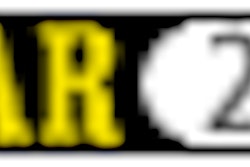
CLEVELAND - Higher productivity is always a good thing, but in the case of radiologic technologists, it’s a strategic imperative. The U.S. is facing a major shortage of RTs that will only get worse in the years to come, unless the adoption of new technologies such as PACS keeps productivity rising.
Measuring the impact of PACS on technologist productivity is the goal of a new longitudinal study by the Research & Development Committee of the Society for Computer Applications in Radiology. The committee, which will be tracking PACS-related changes in RT productivity over the next five years, presented its first-year results at a special SCAR session on Saturday.
The technologist shortage is both significant and growing, according to the study’s principal author, Dr. Bruce Reiner of the Baltimore VA Medical Center. The American Hospital Association estimates that the RT vacancy rate is currently 15%, while the American Healthcare Radiology Administrators association estimates that 58% of hospitals have inadequate staffing levels.
And things are only going to get worse. In the years to come, not only will an aging U.S. population increase the demand for radiology services, but an aging RT population means that more techs will be retiring soon. The U.S. Bureau of Labor Statistics estimates that 75,000 RT jobs will be needed in 2010, in addition to those already in the workforce in 2000, Reiner said. At the same time, the increasing complexity of medical imaging equipment will place greater demands on RTs.
There are several obvious solutions to the employment crisis, such as higher salaries for technologists and enhanced perception of the RT field as a career choice. But PACS and related information technology can also help, by enabling RTs to work more quickly and productively, Reiner said.
To test this hypothesis, SCAR partnered with data collection firm IMV Medical Information Division of Des Plaines, IL. The two parties assembled a detailed survey that included questions on procedure volume, staffing levels, and PACS deployment. IMV administered the questionnaire last year as part of its annual survey of hospitals and imaging centers in the U.S. A total of 112 imaging facilities participated in the SCAR portion of the survey.
Most respondents said their RT staffing shortages were the most severe in general x-ray, Reiner said. Only 40% of sites surveyed said they had adequate staffing in general radiography, while 70% said that they had adequate staffing for all other imaging modalities. The median number of technologist full-time equivalents budgeted for general radiography was 18.9, while the median number of actual technologist FTEs at responding sites was 17. There was almost no difference between actual and budgeted technologist FTEs in other modalities.
Larger hospitals tended to report more serious staffing shortages, with about two-thirds of hospitals larger than 200 beds reporting technologist shortages. University hospitals had a higher perception of inadequate staffing (88%) compared with community hospitals (58%). Interestingly, there was no apparent correlation between staff shortages and the implementation of PACS.
PACS did have a measurable impact on technologist productivity -- an impact that wasn’t always positive. The survey found that those institutions still in the first year of PACS implementation actually reported a decline in RT productivity, Reiner said.
The median level of RT productivity without PACS was 2,848 exams per technologist FTE. But hospitals that acquired PACS in 2001 -- the year of the survey -- reported a median productivity level of 2,540 exams per technologist FTE, a decline of 10.8%.
Reiner attributed the decline to the learning curve that always accompanies PACS implementation. Other studies have demonstrated that system down time, lack of access to quality assurance workstations, lack of integration between IT systems and other factors can hurt productivity in the first year of PACS operation. But this is typically followed by a period of sharply increased productivity as personnel become familiar with the system. Productivity gains then slow until the next new technology is introduced.
"In the early phases of technology implementation, you have a flat line, you don’t see much improvement in productivity," Reiner said. "You then get a sharp rise in productivity, then you reach equilibrium."
The survey data bear out this hypothesis. Responding sites with PACS in operation for more than a year reported productivity of 3,245 exams per technologist FTE. That’s 13.9% higher than sites without PACS, and 27.8% higher than those in the early-adopter phase of PACS implementation.
Reiner cited other studies that have investigated the workflow benefits of digital image management. Future productivity advances will also come from new technologies on the horizon, he said, particularly from workflow optimization software.
SCAR and IMV plan to continue to track technologist productivity with annual surveys that will enable researchers to follow changes on a longitudinal basis, Reiner said. The groups also hope to expand the study beyond the 112 institutions that are currently participating.
By Brian CaseyAuntMinnie.com staff writer
May 5, 2002
Copyright © 2002 AuntMinnie.com

















